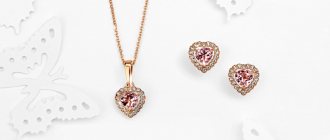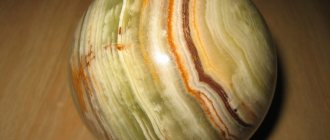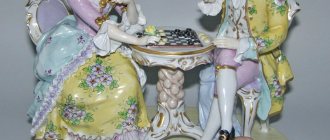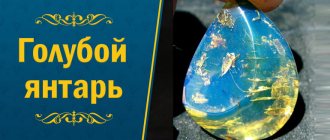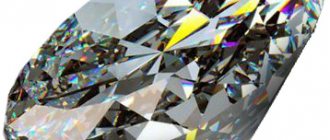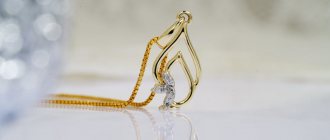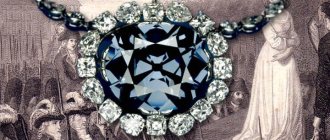The exclusive “Heart of the Ocean” pendant became widely known after the release of the film “Titanic” directed by James Cameron.
The jewel that was given to the main character of the picture was a dark blue diamond made in the shape of a heart. This jewelry is a copy created on the basis of the original, which is considered to be the Hope Diamond, which is overgrown with numerous stories and legends.
History of decoration
The events accompanying the transition of the stone from one owner to another were of a dramatic nature, associated with tragic deaths. Because of this, the diamond began to be called cursed, but this did not prevent people all over the world from growing interest in it.
Mysticism and mysteries of diamond
The original was first mentioned during the reign of Louis XIV, when the jeweler Tavernier brought it from a trip to India. Initially, this stone was used during ritual sacrifices; for four centuries in a row it was sprinkled with the blood of people and animals. Later he began to decorate the forehead of the Hindu deity , one version suggests that it was a statue of Sita, another - Shiva. Legend has it that higher powers placed a curse on the diamond after it was stolen and smuggled out of India.
At the time of its presentation to Louis XIV, the stone was poorly cut, its shape was a triangle, and its weight was one hundred and fifteen carats. The uniqueness of the diamond lay in its size and rich color, which can be found quite rarely in nature. The King of France ordered a new cut for the stone (as a result of which it began to weigh 67 carats less) and placed it in a gold pendant.
Soon the jewel brought by Tavernier became an adornment of the royal crown and was called the “blue diamond of the French crown” or “blue Frenchman”. The remaining parts that were left over from the re-cutting were taken over by different people.
Soon after the diamond's appearance in Europe, it began to fall into disrepute: many believed that this event brought the plague and led to the death of Tavernier and Louis. Skeptical historians recall that the first of them died at eighty-three years old, and the second at seventy-eight. After this, the pendant was given to Marie Antoinette and allegedly brought numerous misfortunes to her, ending with her execution. Then for some time its history was not traced; during the French Revolution it was kidnapped by unknown persons and was first mentioned only in the 1830s.
Diamond "Orlov"
The story about “the very best” would be incomplete without mentioning the fantastic “Orlov”, the recognized favorite of the Diamond Fund. It weighs 184.62 carats (maybe more, it is impossible to determine exactly), has a greenish-bluish tint, and is the largest diamond found in India. It has retained the rare “Indian rose” cut with as many as 180 facets!
Most likely, “Orlov” is the same “Great Mogul”, often mentioned in historical chronicles. In any case, that’s what the same Tavernier we talked about above called it. He was the first European to see the treasury of the Mughal Shah.
The further history of the stone is eventful. He repeatedly changed noble owners during palace coups, wars of conquest and ordinary thefts, until he surfaced in London. There it fell into the hands of the Armenian merchant Grigory Safras, from whom his Russian colleague, Ivan Lazarev, bought it.
Scepter of the Russian Empire with the Orlov diamond
The Indian stone received its Russian name thanks to the favorite of Catherine II, Count Orlov, who bought the diamond from Lazarev for an unimaginable 400 thousand rubles, albeit in installments. Allegedly, the brilliant count simply gave a rare diamond to Catherine for her birthday. Although there is a version that the empress personally took money from the treasury and paid for the purchase, and included Orlova in the game in order to avoid accusations of extravagance.
Now the scepter of the Russian Empress, decorated with “Orlov”, is kept in the Armory. It’s problematic to even talk about its approximate cost - this is a fantastic amount even for the wildest imagination.
There is another legendary diamond with a similar name - “Black Orlov”. Unlike its sparkling namesake, it is dark gray in color and is considered the most famous black diamond in the world.
Replicas of the famous necklace
Those who want to get their hands on the jewel have long forgotten all the dark stories associated with it. After watching Titanic, “Heart of the Ocean” became a symbol of pure and sincere love. When creating duplicates of a unique pendant, each jeweler prefers to use a certain material. The most popular of them are:
- sapphire;
- semi-precious crystals;
- agate;
- Austrian crystal of mountain origin.
Many manufacturers have introduced variety, expressing it in jewelry sets that include a pendant, ring and earrings. Each of these products contains a blue stone shaped like a heart. Their advantages, if things are considered as gifts for romantic natures, lie in their exquisite appearance, elegant cut and unusual design. The shine of the crystals, combined with the solidity of the main stone, gives the jewelry a feeling of high value and uniqueness, thereby emphasizing the style and good taste of their owners.
In addition to the advantages, such things also have their disadvantages. Those that have too affordable a price do not have a dazzling stone, jewelry coating on the cut and chain. After a short amount of time it wears off, which leads to a loss of respectable appearance. Expensive versions of higher quality are not designed for every buyer, so it is quite difficult to purchase a high-quality product, but at the same time inexpensive.
Also, when purchasing, you should pay attention to the weight of the stone; it may be too large, as well as the length and thickness of the chain. The color of the stone also matters, as it does not always match its counterpart in the film.
You can admire the original pendant by purchasing a ticket to the Smithsonian Institution museum for two dollars, where the exhibit is protected by bulletproof glass. Currently, while no one has the desire to steal or buy a museum rarity, everyone makes do with its copies, which do not smell of ominous curses.
Diamond "Heart of the Ocean"
Let's start by getting acquainted with the history of jewelry, a copy of which costs more than the original. We're talking about a replica of a necklace with a divine blue stone that adorned Rose's (Kate Winslett) neckline during the filming of the unforgettable Titanic.
The prototype of the jewel was the “cursed” blue Hope Diamond. James Cameron worked out all the details, and a smart viewer should have been wary of the appearance of the infamous jewel in the frame. This is clearly not good!
The props for the blockbuster were chosen impeccably, and the role of the cursed necklace was played by two magnificent brothers made by famous jewelry houses - with blue tanzanite and cubic zirconia.
As you remember, the blockbuster gained deafening fame, and with it, Rose’s magnificent necklace. The unforgettable blue color of the diamond, its design in the shape of a heart - all this magnificence won the hearts of not only beautiful ladies, but jewelers all over the world.
Many replicas of the legendary decoration were created, including jewelry. Maestro Harry Winston especially distinguished himself by creating a copy of a magnificent necklace that was many times more expensive than the original.
The epicenter of the necklace was a rare deep blue diamond weighing over 13 carats, the origin of which is unknown. The price of the Heart of the Ocean diamond (with its setting and smaller stones, of course) is about $20 million.
“Heart of the Ocean” is the most frequently reproduced decoration of recent decades. According to the most conservative estimates, $160 million worth of jewelry of this type was sold. And that's not counting the jewelry!
What makes this stone so unusual and valuable?
It's not just its weight, color and purity. In order for a cloudy diamond to sparkle with its ideal facets, real skill and talent of cutter jewelers is required. The shape of the future diamond is chosen with special care to be able to demonstrate the full potential of the stone.
Today, about 15 cutting options are known, and each of them has its own characteristics. However, it is worth remembering that human imagination is limitless and in the future, more than one, no less spectacular and interesting form will probably be invented, which will give enthusiastic diamond admirers thousands of sparkling facets.
"Kohinoor"
Meet the legendary treasure of the British crown, the magnificent Kohinoor weighing 105 carats. Its documented history begins at the beginning of the 14th century!
For many centuries, the luxurious diamond served as a symbol of the power of the rajas of the ancient Indian state of Malwa and bore the name “Mountain of Light”. During internecine wars, it changed owners many times, but did not leave India. According to legend, "Kohinoor", along with its shining brother "Derianur", served as the eye of a Shiva statue in an ancient Indian temple.
Then came the Mughal invasion, and “Kohinoor” became one of the stars of the famous Peacock Throne, then came the Persians, Afghans, Indians again and finally the British. The conquerors could not leave such a treasure in their homeland and transported it to London.
Kohinoor wearing the British crown
In 1852, “Kohinoor” was recut, as a result of which it lost its historical appearance and part of its weight, but gained pure colorlessness and a flat shape. Now it adorns the crown of reigning Elizabeth and is kept in the Tower treasury.
Literature
- Marian Fowler, Hope: Adventures of a Diamond
, Ballantine (March, 2002), hardcover, ISBN 0-345-44486-8. - Janet Hubbard-Brown, The Curse of the Hope Diamond (History Mystery)
, Harpercollins Children's Books (October, 1991), trade paperback, ISBN 0-380-76222-6. - Richard Kurin, Hope Diamond: The Legendary History of a Cursed Gem
, New York: HarperCollins Publishers & Smithsonian Press, 2006. hardcover, ISBN 0-06-087351-5. - Susanne Steinem Patch, Blue Mystery: The Story of the Hope Diamond
, Random House (April, 1999), trade paperback, ISBN 0-8109-2797-7; hardcover ISBN 0-517-63610-7. - Edwin Streeter, The Great Diamonds of the World
, George Bell & Sons, (Jan, 1898), hardcover, no ISBN known.
Alternative ending [ed. | ed. code ]
Many scenes that would have shown Lovett's frantic interest in the whereabouts of the diamond were removed during Rose's story. In one such scene, where Caledon realizes that the diamond is in the cloak that he gave to Rose, he sends Lovjon to get it, promising him the diamond if he succeeds. After a fight with Jack, he fails to do this. In one possible ending, Lovett and League (Susie Amis), Rose's great-granddaughter, spot her walking along the stern of the ship. They see her stand on the railing and quickly run to calm her down. She shows them the diamond, waving it over the rail, threatening to throw it into the water in order to keep them away from her. When they ask how she kept the necklace all this time, Rose replies that she had the idea of selling it more than once, but she wanted to live alone without Caledonian money.
About the formation process and properties of blue diamond
Diamond is the hardest mineral on our planet. On the mineralogical scale it is rated 10. It is also considered the most transparent and the most expensive. It is also famous for its high ability to reflect color in faceted form.
Diamonds take several hundred years to turn blue. Boron penetrates into their crystal lattice, which gives the mineral a similar shade. The higher the content of this substance in a diamond, the more saturated its color.
Diamonds are made of carbon. Their color is determined by the admixture of other substances.
Since blue diamonds are extremely rare in nature, but the demand for them is constantly growing, people have learned to grow precious crystals in laboratory conditions. Such diamonds do not differ from natural stones in physical properties and look no less beautiful, but are much cheaper. It is impossible to independently distinguish the analogue from the original.
About the properties of diamonds, watch the lecture by the Doctor of Geological and Mineralogical Sciences:
Holy water and curse removal
Pierre Cartier sold the diamond to the daughter of the owner of the Washington Post newspaper, Evelyn Walsh-McLean. The woman decided to change the history of the cursed stone and immediately consecrated it in the church.
Evelyn regularly wore the Hope Diamond Necklace and let her children play with it. Perhaps this is just a coincidence, but when her son was 9 years old, he was killed by a car, and her 25-year-old daughter committed suicide.
Evelyn herself was abandoned by her husband. Subsequently, he went crazy and ended up in a mental hospital, where he spent the last days of his life. The Washington Post newspaper had to be sold for next to nothing.
After her death, her grandchildren doubted the usefulness of the diamond. They did not want to keep the cursed stone in their house and sold the Hope Diamond to jeweler Harry Winston.
The entrepreneur did not tempt fate and began raising funds for charity, demonstrating “Nadezhda” at social balls held in the USA and throughout the rest of the world.
Perhaps this is why Winston himself was not harmed, but out of superstition in 1958 he donated this diamond to the Smithsonian Institution in the USA.
For unknown reasons, he wrapped the gem in plain paper and sent it by messenger, who delivered Hope to its destination without any problems.
True, just a few days later the courier himself found himself under the wheels of a truck, and his wife and beloved dog died in a fire at his house.
